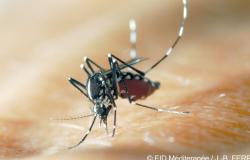Based on data collected from 187 countries, the WHO (World Health Organization) estimates that the number of deaths due to viral hepatitis increased from 1.1 million in 2019 to 1.3 million in 2022, with an 83% share of deaths for hepatitis B and 17% for hepatitis C. Every day, 3,500 people die from hepatitis. The disease is thus the second cause of mortality from infectious diseases in the world, at the same level as tuberculosis.
The organization estimates that in 2022, 254 million people were affected by hepatitis B and 50 million by hepatitis C. Half of them were between 30 and 54 years old and 12% were children. They were men in 58% of cases. The only slightly reassuring news: the incidence of viral hepatitis is falling slightly, from 2.5 million new cases in 2019 to 2.2 million in 2022: 1.2 million for hepatitis B and almost a million for hepatitis C. However, there are still more than 6,000 new cases per day.
Despite technical progress made in diagnosis and treatment, at the end of 2022 only 13% of people living with chronic hepatitis B had received a diagnosis (compared to 10% in 2019) and around 3% benefited from a antiviral treatment (compared to 2% in 2019). Regarding hepatitis C, the figures were 36% (21% in 2019) and 20% (13% in 2019), respectively. There is therefore an improvement, but weak and well below the objective of treating 80% of people suffering from hepatitis in 2030.
Treatments: discrepancy between announced prices and actual prices
Many countries are unable to purchase generic medicines, even those deemed affordable. Moreover, ” many countries pay a price above the global benchmark, even for drugs that have entered the public domain or are subject to voluntary licensing agreements. For example, although tenofovir for the treatment of hepatitis B is no longer protected by patent and is available at a global benchmark price of $2.4 per month, only 7 of 26 countries reporting data pay a price equal to or less than this amount. ” Another example : ” A 12-week treatment for hepatitis C with pangenotypic antivirals (combination of sofosbuvir and daclatasvir) is available at a global reference price of $60, but only 4 of the 24 countries reporting data pay a price equal to or less than this amount. »
Of the 187 countries reporting data, only 60% provide completely free viral hepatitis testing and treatment services in the public sector. In Africa, the proportion is only a third.
The highest incidence of viral hepatitis is Africa, where only 18% of newborns are vaccinated. And the highest mortality is in the Western Pacific (47% of global deaths), where only 23% of those diagnosed receive adequate treatment. Finally, ” Bangladesh, China, Ethiopia, the Russian Federation, India, Indonesia, Nigeria, Pakistan, the Philippines and Vietnam collectively bear almost two-thirds of the global burden of hepatitis B and C . »
For the WHO, these include, among other things, “ limited knowledge of cost-saving interventions and tools, as well as competing priorities in global health agendas. »






